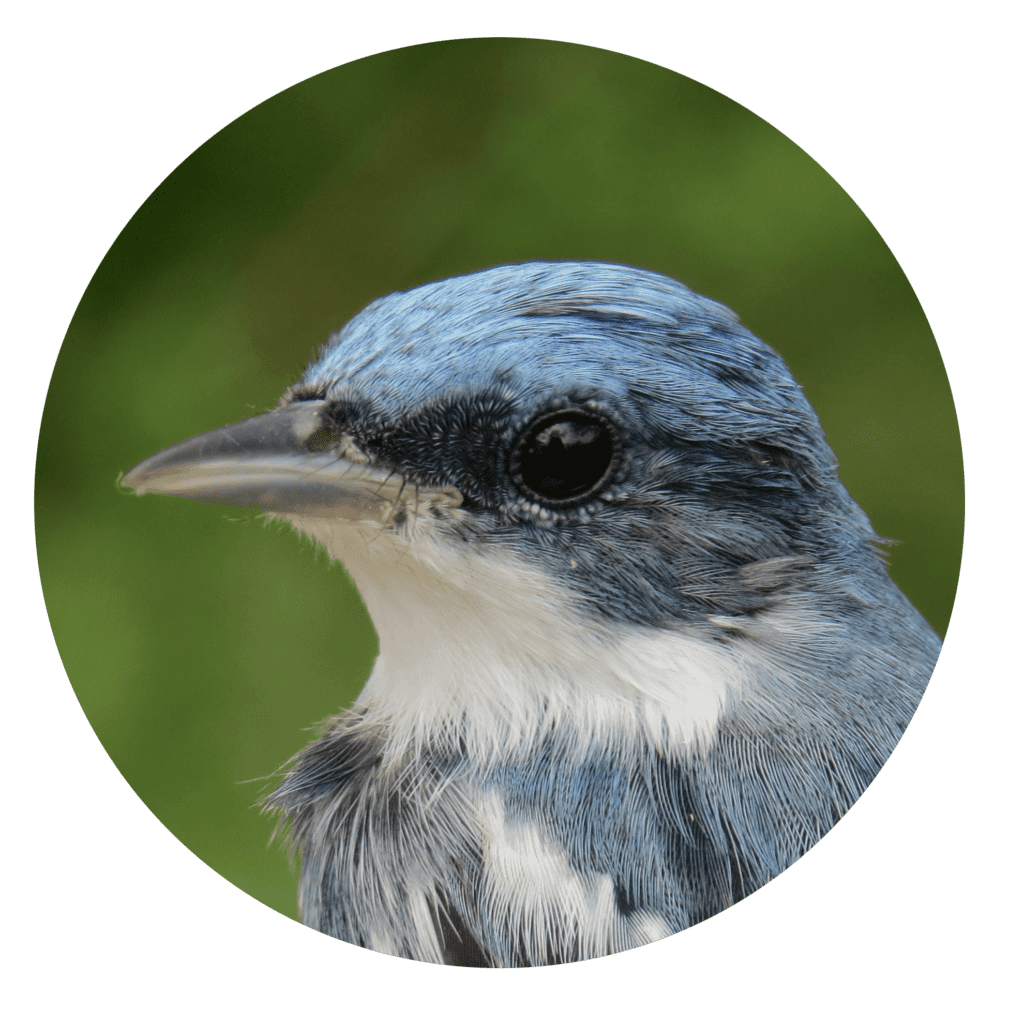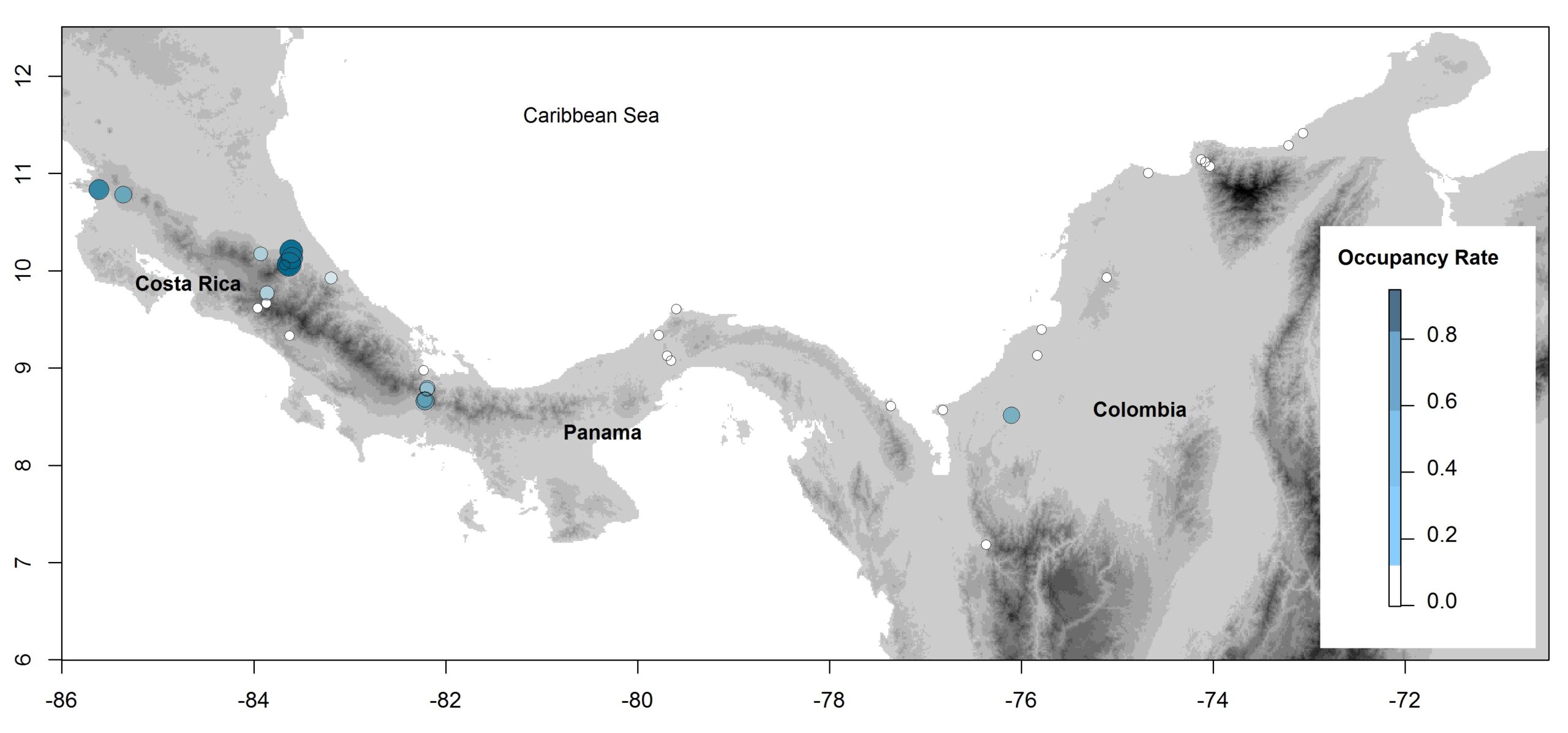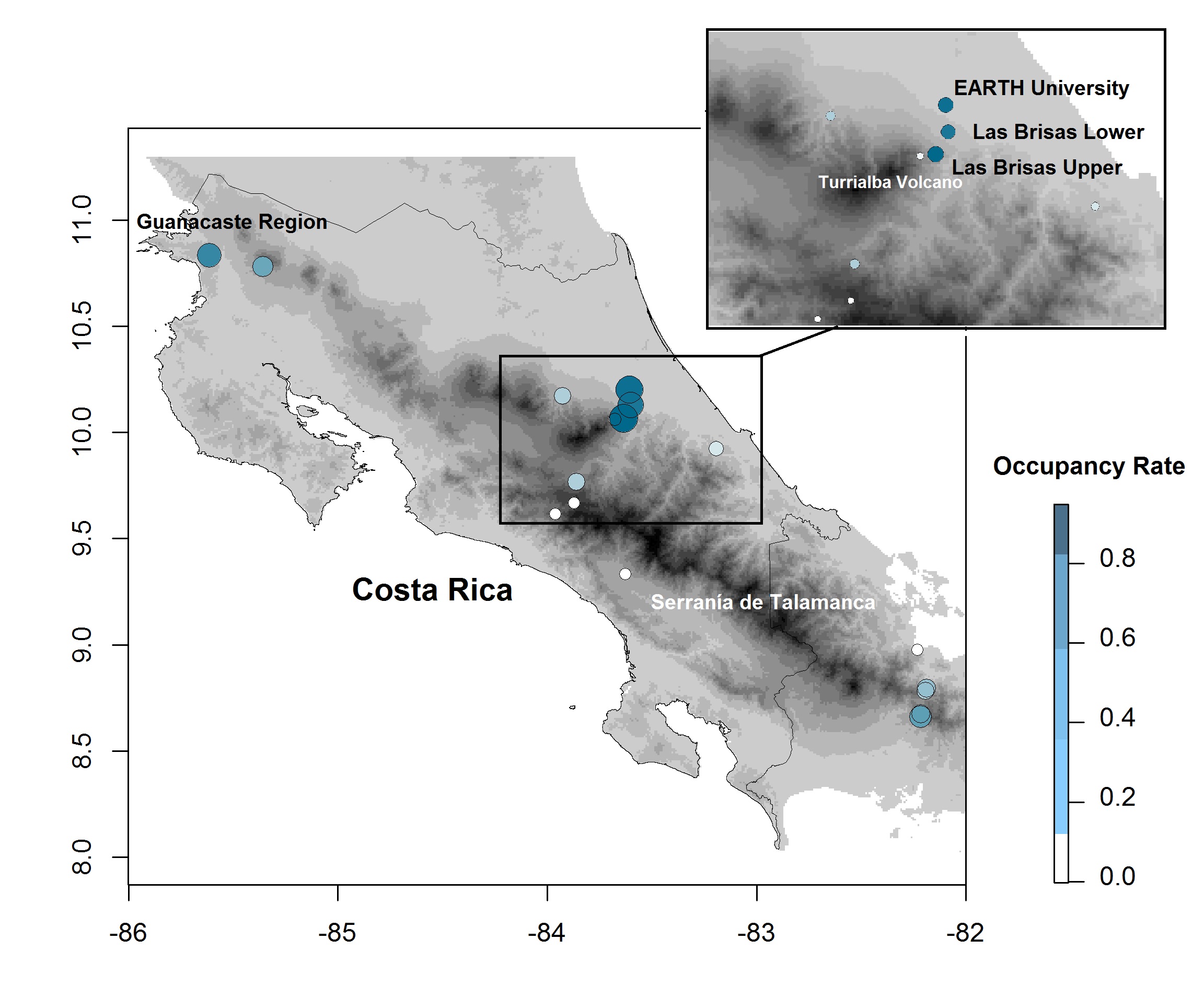Cerulean Warbler
Warblers / Reinitas
Classified as Vulnerable by the IUCN, the Cerulean Warbler (Setophaga cerulea) has undergone dramatic population declines over the last 50 years, with habitat loss both on the wintering and breeding grounds being blamed. Declines might also be linked to the loss of migratory stopover habitat, given that this species appears to employ a risky migration strategy involving long non-stop flights from North America to Costa Rica and Panama in fall and from middle Central America to North America in spring. A necessary step in order to understand the drivers of declines, is to understand where and when this species stops to lay down the fuel for migration and whether the habitats and sites used are under threat or not. Surveys carried out during fall have revealed concentrations of birds along the Caribbean slope of Costa Rica and in Honduras. In Costa Rica, a capture-resighting project and the deployment of radio-transmitters, showed that birds stop there for between 3 and 15 days, with average stopovers lasting a week, during which time birds gain mass to continue to South America.


